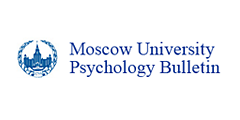
Moscow State Univeristy of International Affairs, Moscow, Russia
-
Discourse abilities in the structure of intelligence
-
Background. This article is devoted to empirical research on discourse abilities within the structure of cognitive abilities. Discourse abilities, as well as linguistic abilities, are part of language abilities, but they are directly linked with discourse practices and a certain communicative situation. Discourse abilities allow a person to effectively initiate, keep, expand, and complete the process of communication, using language appropriate to any given situation. These abilities contribute to making communication more effective and achieving mutual understanding between partners, while at the same time they speed up the process of forming an interaction strategy. the empirical verification of the construct “discourse abilities,” and the design of original diagnostic tests on them, led us to differentiate linguistic and discourse abilities.
Objective. However, it is not yet clear what place discourse abilities occupy in the structure of cognitive abilities. This is the primary goal of our research.
Method. The design of the study involved group testing (in groups of 15-35 people) using the following methods: a discourse abilities test; a short selection test; a social intelligence test, and short variations of Torrance’s and Mednick’s tests. In total, 208 people (133 women and 75 men, ages 17 to 21 years) participated in the study, all of them either first year humanities students or high school students from Moscow.
Results and Discussion. The research results revealed that discourse abilities relevantly correlate with the majority of indicators of general and social intelligence and creativity (except non-verbal intelligence). Discourse abilities as part of the structure of cognitive capabilities form a discrete factor, and include relevant components such as verbal and general intelligence and indicators of social intelligence, such as the ability to group expressions. Structures indicative of cognitive abilities varied within the study group, which included people with different levels of discourse abilities. A data structure which conformed to an a priori structure of cognitive abilities was observed only in the group with the medium level of discourse abilities. The group with a low level of discourse abilities mostly showed the aggregation of various indicators of intelligence and creativity, while the group with a high level of discourse abilities showed further differentiation of intelligence types, and the evolution of discourse abilities into a separate factor.
DOI: 10.11621/pir.2017.0306
Keywords: human cognition, structure of intelligence, psychometrics, creativity, dis- course, discourse abilities, communication, complex span task, updating task
-









